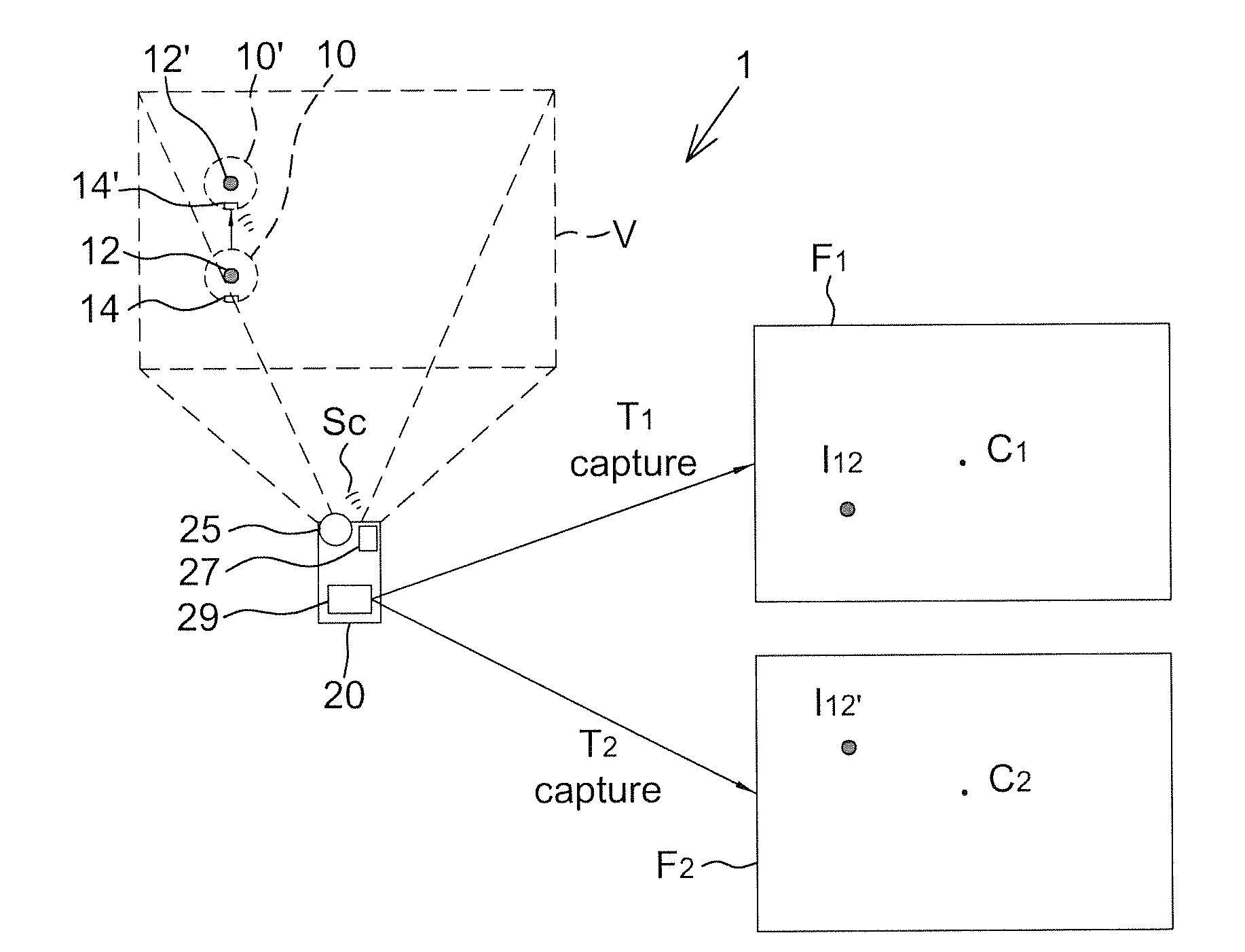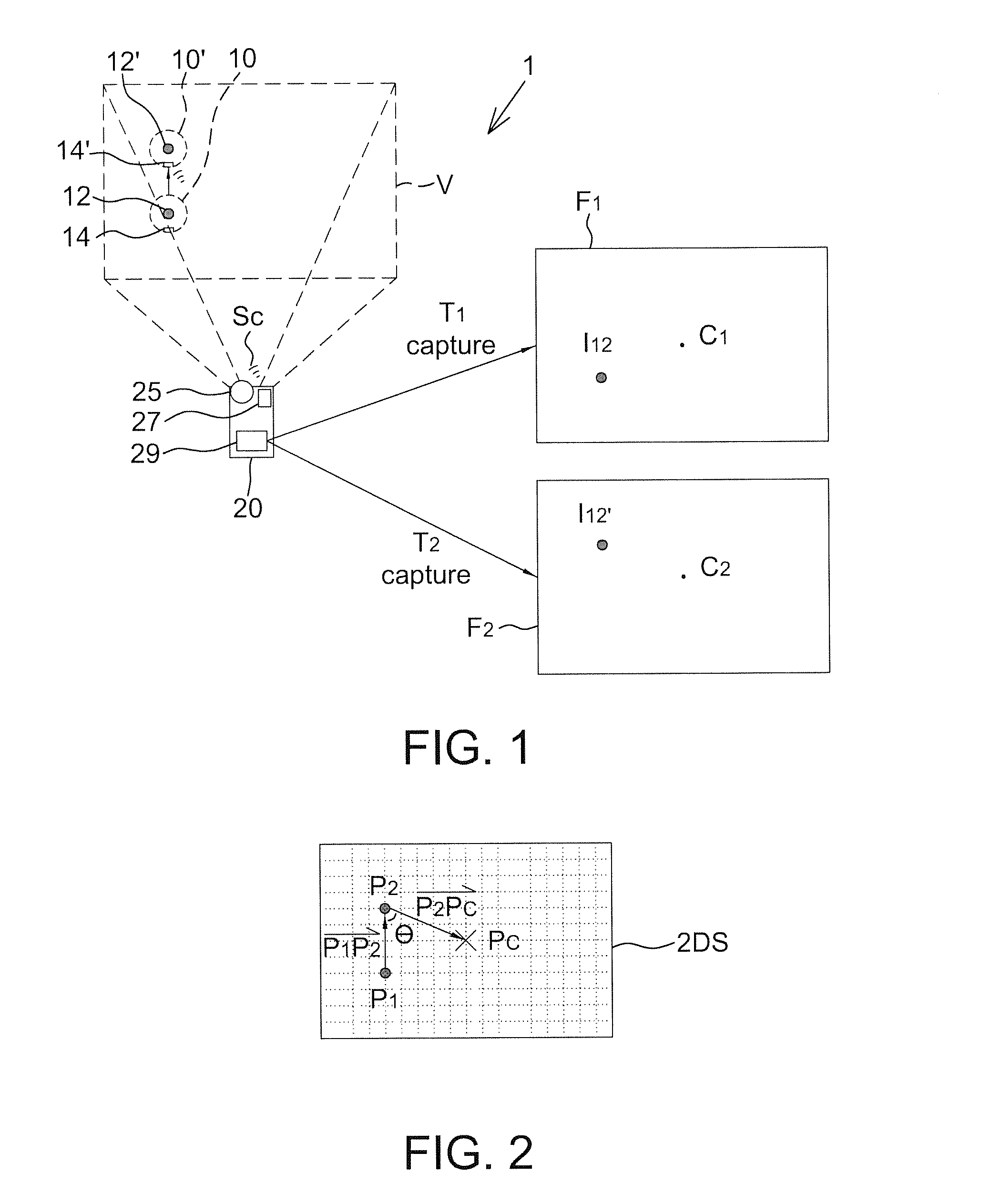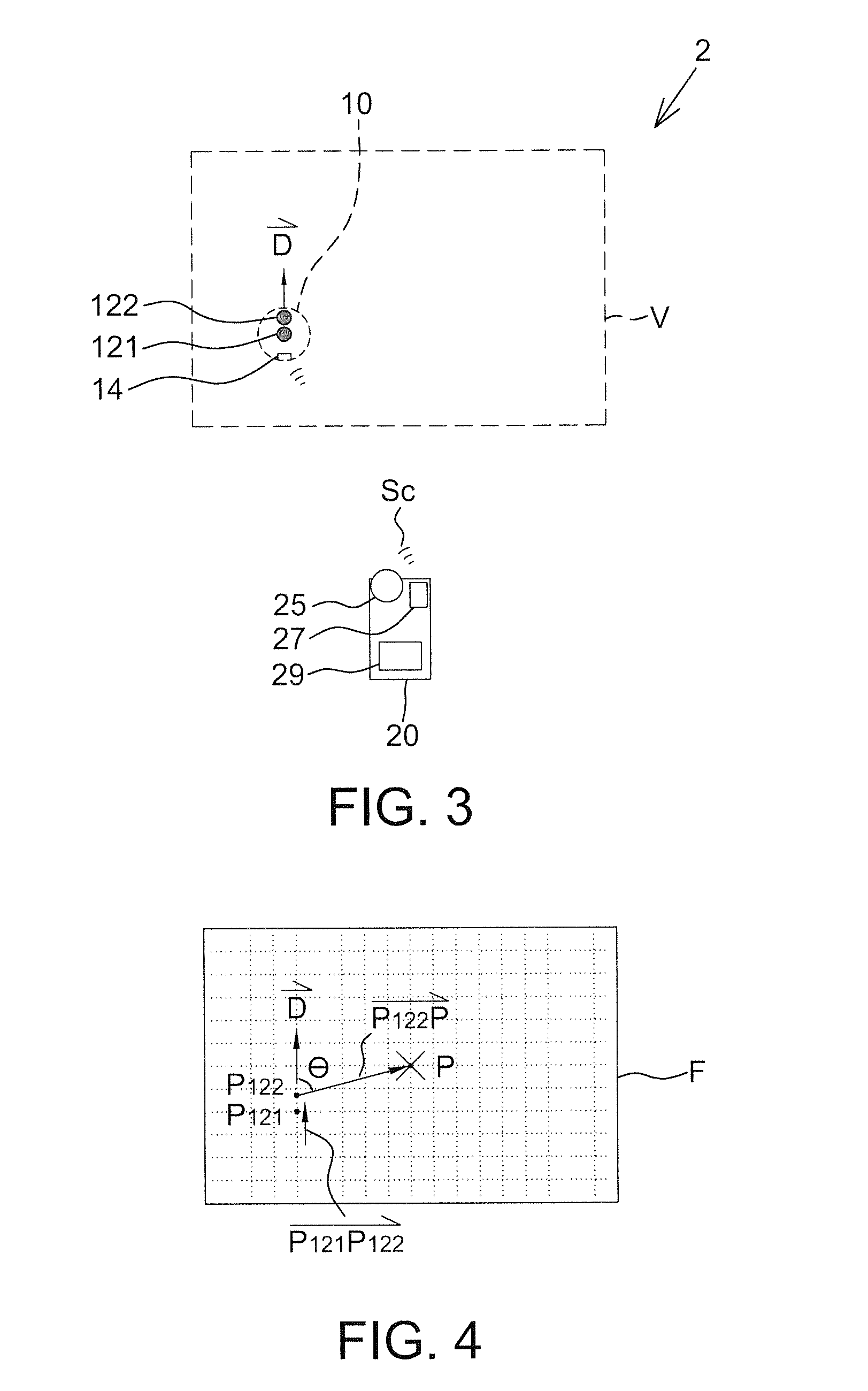Remote control system for pointing robot
a remote control system and robot technology, applied in the field of remote control systems, can solve the problems of long response time and low accuracy and the user's inability to intuitively control the direction of the remote control system in the conventional remote control system,
- Summary
- Abstract
- Description
- Claims
- Application Information
AI Technical Summary
Benefits of technology
Problems solved by technology
Method used
Image
Examples
first embodiment
[0028]FIG. 1 shows a schematic diagram of a remote control system 1 according to the present disclosure, for example the remote control system for a pointing robot. The remote control system 1 includes a controlled device 10 and a remote device 20. A user may control the controlled device 10 though the remote device 20, for example controlling a moving direction, a moving velocity, a travel distance, a turning angle and / or an operating strength of the controlled device 10.
[0029]The controlled device 10 has a light source 12 and a receiver 14. The light source 12 may emit light with an adjustable flicker frequency or light on constantly without the flicker to be served as a reference point for detecting positions of the controlled device 10. The receiver 14 is configured to perform one-way or two-way communication with the remote device 20. It should be mentioned that the position of the light source 12 of the controlled device 10 shown in FIG. 1 is not used to limit the present disc...
second embodiment
[0040]FIG. 3 shows a schematic diagram of a remote control system 2 according to the present disclosure, and the system may be a remote control system for a pointing robot and include a controlled device 10 and a remote device 20 as well. Similarly, a user may control the controlled device 10 through the remote device 20, e.g. controlling an operating mode, a moving direction, a turning angle, a moving velocity, a travel distance and / or an operating strength.
[0041]The controlled device 10 has a first light source 121, a second light source 122 and a receiver 14, and moves in a predetermined moving direction {right arrow over (D)} (e.g. ahead of the controlled device 10). The first light source 121 and the second light source 122 have different characteristics (described later) so as to be distinguished by the remote device 20. The receiver 14 is configured to perform one-way or two-way communication with the remote device 20. It should be mentioned that the positions of the first li...
third embodiment
[0052]FIG. 5 shows a schematic diagram of a remote control system 3 according to the present disclosure, and the system may be a remote control system for a pointing robot and include a controlled device 10 and a remote device 20 as well. Similarly, a user can control the controlled device 10 through the remote device 20, e.g. controlling an operating mode, a moving direction, a turning angle, a moving velocity, a travel distance and / or an operating strength of the controlled device 10.
[0053]The controlled device 10 has a light source 12 and a receiver 14 and moves in a predetermined moving direction {right arrow over (D)}, wherein the light source 12 has a predetermined pattern configured to correspond to the predetermined moving direction {right arrow over (D)} (e.g. an arrow pattern pointing toward the predetermined moving direction {right arrow over (D)} as shown in FIG. 5). The light source 12 emits light with an adjustable flicker frequency or lights on continually to be serve...
PUM
 Login to View More
Login to View More Abstract
Description
Claims
Application Information
 Login to View More
Login to View More - R&D
- Intellectual Property
- Life Sciences
- Materials
- Tech Scout
- Unparalleled Data Quality
- Higher Quality Content
- 60% Fewer Hallucinations
Browse by: Latest US Patents, China's latest patents, Technical Efficacy Thesaurus, Application Domain, Technology Topic, Popular Technical Reports.
© 2025 PatSnap. All rights reserved.Legal|Privacy policy|Modern Slavery Act Transparency Statement|Sitemap|About US| Contact US: help@patsnap.com



